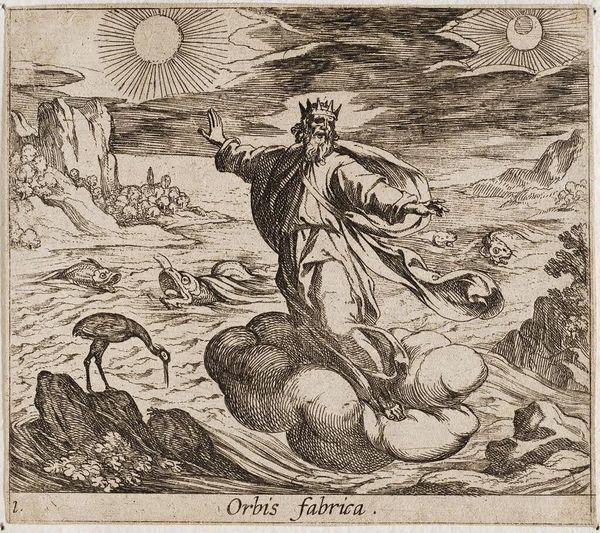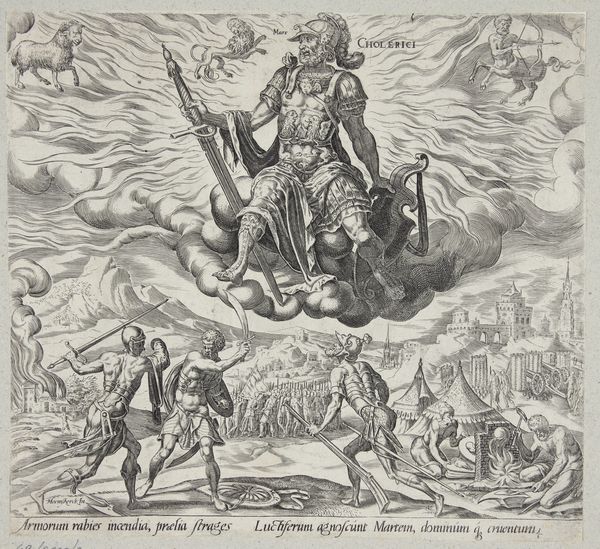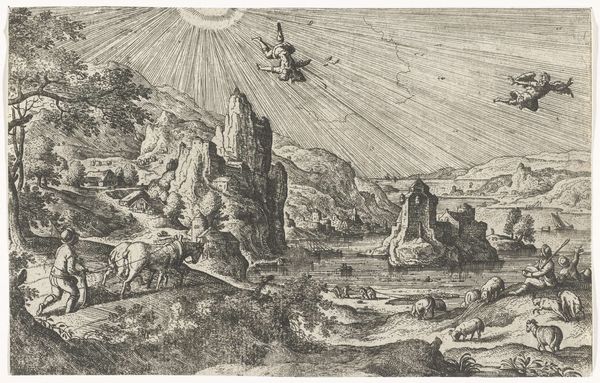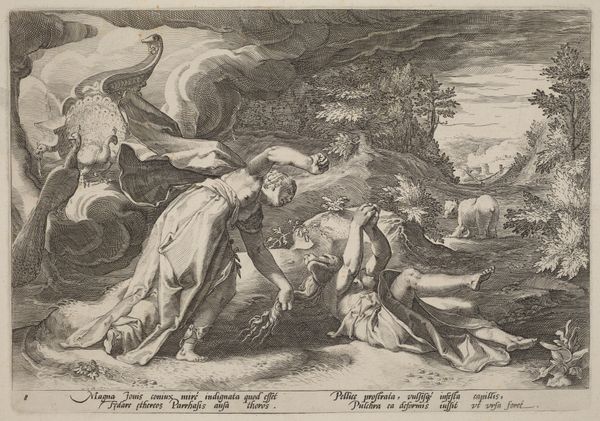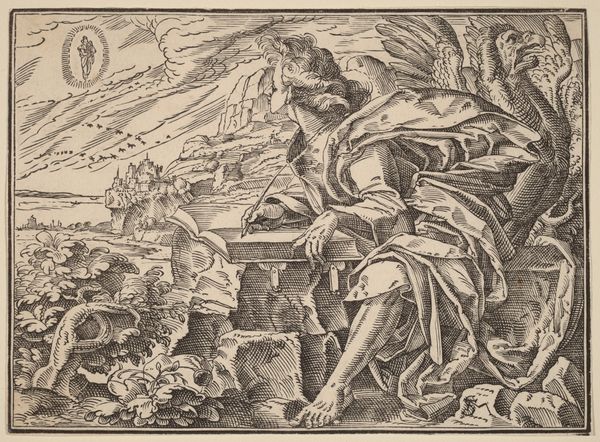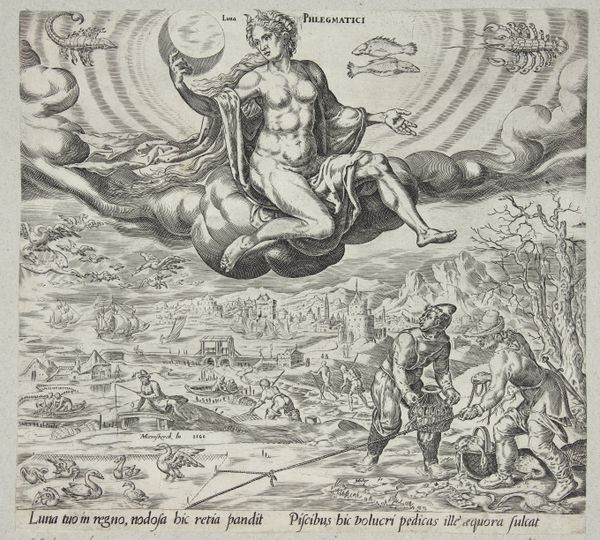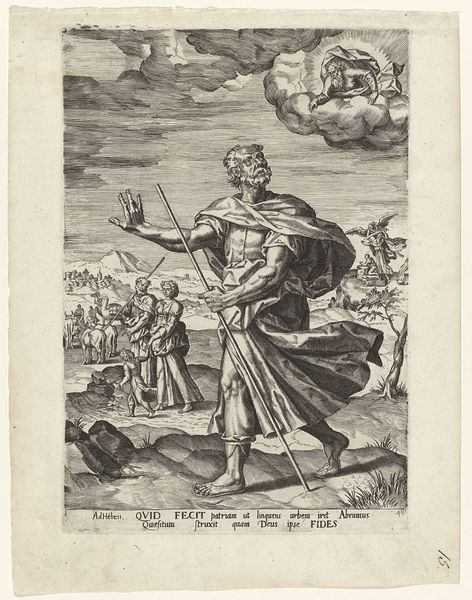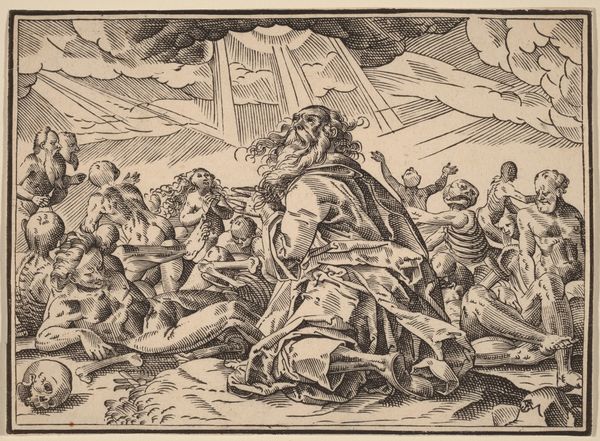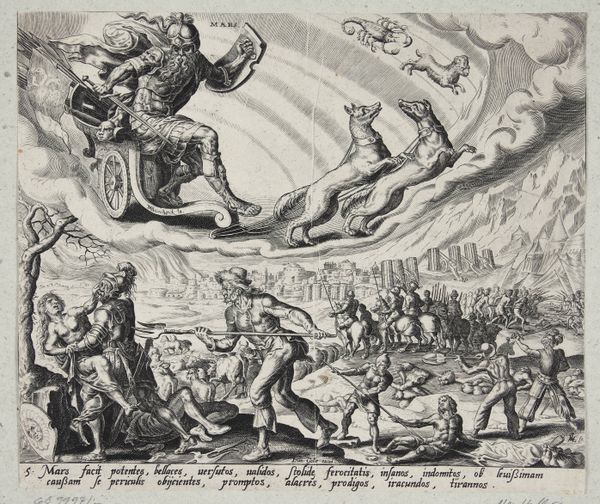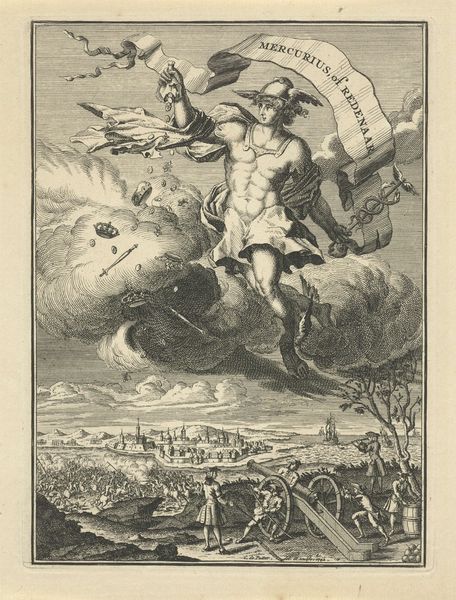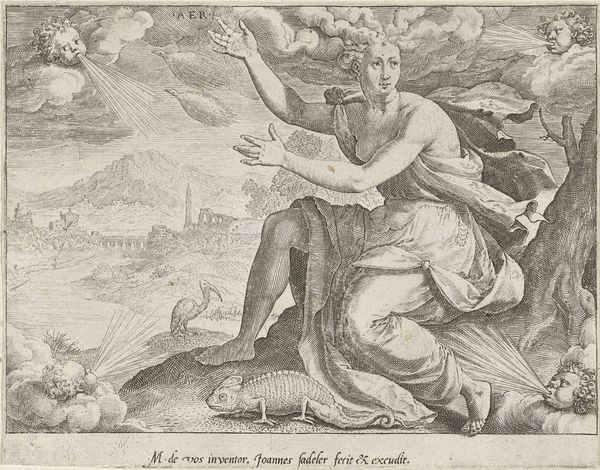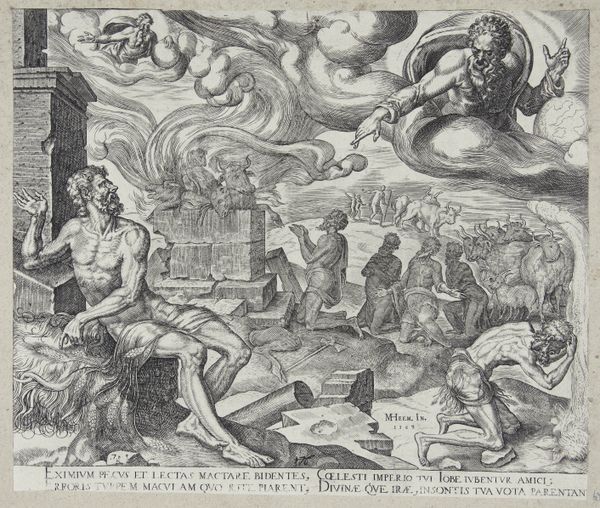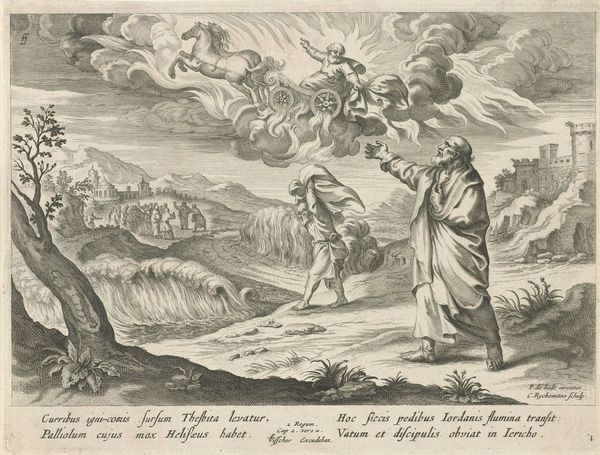
Plate 1: The Creation of the World (Orbis fabrica), from Ovid's 'Metamorphoses' 1606
0:00
0:00
drawing, print, engraving
#
drawing
#
fish
#
baroque
# print
#
bird
#
figuration
#
men
#
line
#
history-painting
#
engraving
Dimensions: Sheet: 4 1/8 × 4 9/16 in. (10.4 × 11.6 cm)
Copyright: Public Domain
Curator: This engraving, created by Antonio Tempesta in 1606, is titled "Plate 1: The Creation of the World (Orbis fabrica), from Ovid's 'Metamorphoses.'" It's currently held at the Metropolitan Museum of Art. Editor: It’s a striking image; quite dramatic. The composition is almost entirely linear. I'm immediately drawn to the figure in the center. He's standing on clouds amid a tumultuous landscape of sea and rock, with what appears to be a sun and moon in the sky. The sheer busyness of the composition evokes the sense of divine activity. Curator: Tempesta, a key figure in the Baroque movement, created this engraving as part of a series illustrating Ovid's famous epic poem. Considering the historical context, engravings such as this played a crucial role in disseminating classical narratives, and understanding of cosmology, among wider audiences. The work became reproducible. Editor: And look closely at the craft. Tempesta is quite skilled with his use of line. Think about the social implications—the labour involved in creating these plates and their accessibility as printed material. How was the experience of consuming imagery transformed? Curator: Exactly. His technique allowed him to disseminate this foundational myth so effectively, underscoring the institution's power. Moreover, consider how institutions, even then, selected what was and wasn't fit for representation. How did this process shape what viewers perceived as "the creation of the world"? Editor: Also note the material choices: The density of lines varies quite a bit. Light and shadow are produced without using paint. Think of the difference between accessing something like this versus painted depictions, say on frescos accessible only to the wealthy, in that era! Curator: Indeed, prints like these became affordable forms of art ownership and vehicles for political messaging. The choice of imagery, like the bearded, authoritative God figure here, reinforces established power structures while also potentially subtly questioning or reinterpreting those narratives. It is the history that defines his impact, that is undeniable. Editor: Yes, exactly! Understanding this as a designed and manufactured object makes clear its value and illuminates what exactly we are looking at: an early version of reproducible mass media. Curator: Seeing it now in the museum, we recognize how the piece contributed to visualizing "creation" for a broader audience, setting precedent for centuries to come, and ultimately defining our experience with early modernity. Editor: And by focusing on how that happened we gain even deeper insights into not just "art" history but how art is fabricated through reproducible imagery. A potent reminder that every image carries a story far beyond its immediate representation.
Comments
No comments
Be the first to comment and join the conversation on the ultimate creative platform.
